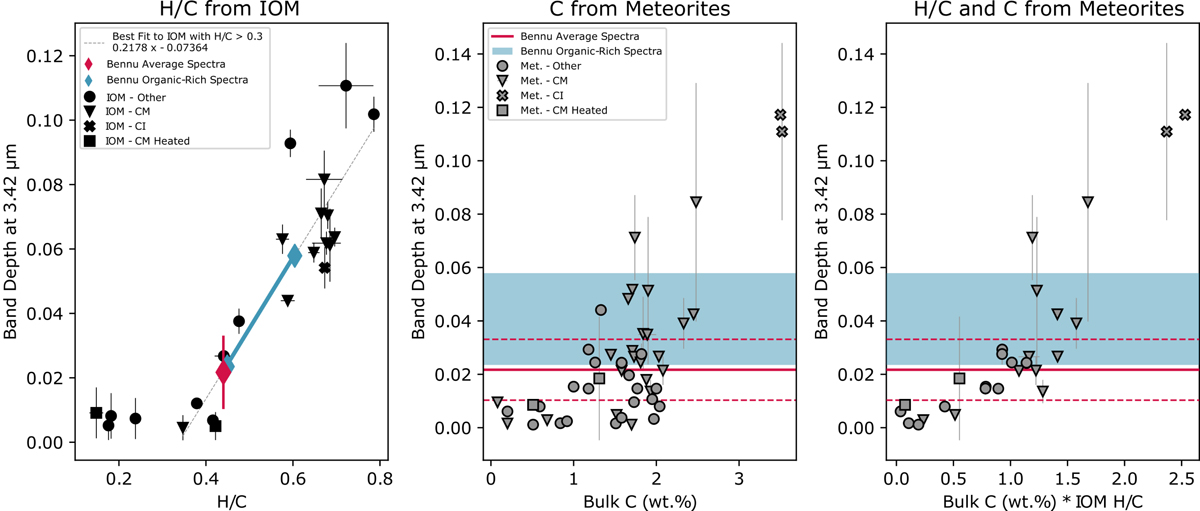Fig. 3.

Download original image
Estimated H/C. (a) Carbonaceous chondrite IOM band depth at 3.42 μm, plotted against H/C (atom.) from Alexander et al. (2007); “other” refers to IOM from CV, CO, CR, and ungrouped carbonaceous chondrites. The 3.42 μm band depths from OVIRS Recon A average (red diamond) and organic-rich spectra (blue diamonds) are plotted on the IOM trend to estimate the upper limit on H/C of 0.6 for Bennu. (b) Carbonaceous chondrite (i.e., bulk meteorite) band depth at 3.42 μm plotted against wt.% C for those meteorites; the symbology is the same as in panel a but for bulk meteorites as opposed to IOM (gray triangle, CM-type; gray cross, CI-type; gray square, heated CM-type; gray circle, other carbonaceous chondrite IOM, including CV, CO, CR, and ungrouped). The band depth at 3.42 μm is also shown for OVIRS organic-rich (blue shaded region) and Bennu global average spectra (solid red line; standard deviation, dashed red lines). The Bennu organic-rich spectra have similar band depths to carbonaceous chondrites containing 1−2.5 wt.% C. (c) Combination of wt.% C and H/C of IOM, the best predictor of 3.42 μm band depth in the meteorites.
Current usage metrics show cumulative count of Article Views (full-text article views including HTML views, PDF and ePub downloads, according to the available data) and Abstracts Views on Vision4Press platform.
Data correspond to usage on the plateform after 2015. The current usage metrics is available 48-96 hours after online publication and is updated daily on week days.
Initial download of the metrics may take a while.


